NEW FIFA RULES FOR THE 2019-2020 SEASON
Today we are going to take a sneak pick into the new set of rules which just took effect in the game of soccer from june 1 2019, though some competition already started before the rule were effective however those competition have the option of delaying the introduction of the new set of rules till next season.
Like we know rules are as important to the game of soccer as it is to mankind in other to maintain some level of fairness and sanity in soccer then they have to be a system that will check mate and ensure that players are always discipline on the field of play.
Over the years soccer have had a lots of evolution in terms of rules which are always sets and enacted by the IFAB , we have seen tremendous improvements in the style of play one of which is the introduction of the VAR.
The IFAB have deem it necessary that change some of the current rules of the game and also introduction of new ones to the game is due so after meeting they have approved a number of amendments and clarification to the current laws of the game. Although this is not the first time the rules of the game have been tweaked and it probably won’t be the last as administrators continues to figure out the best way in a world of changing technology
Here are some of the rules as approved by IFAB
FREE KICKS (no attacking players in the wall)
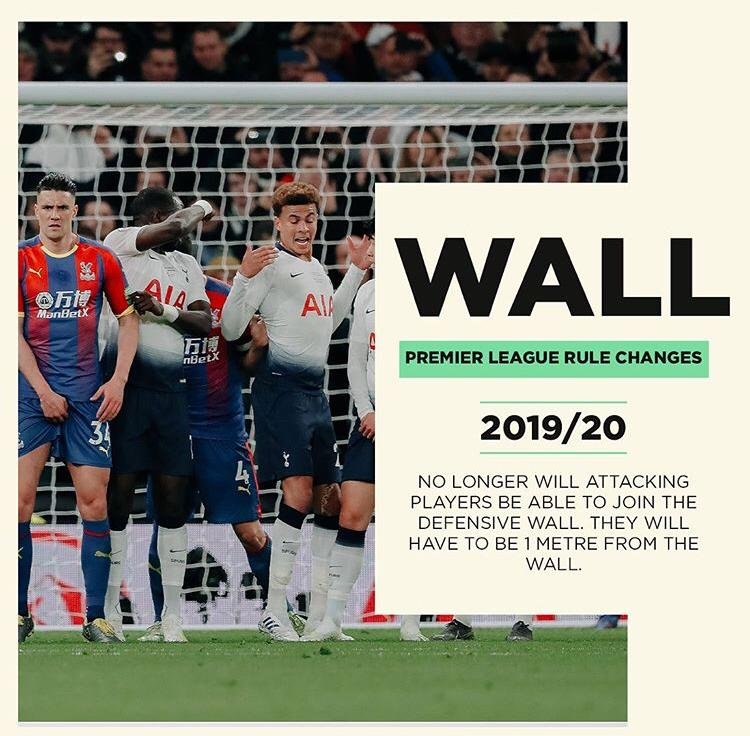
Taking effect from nest season attacking players (those from the team on attacking from free kicks) are prohibited from being in the wall.
Attacking players are expected to be at least one meter from the wall when the free kick is taken and players found violating this rule will be penalized and the other team will be rewarded with an indirect free kick.
The idea behind the change is to avoid time wasting and disturbance between players that may result to physical altercation.
According to IFAB there is no legitimate tactical justification for attackers to be in the wall and their presence is against the spirit of the game and often damage the image of the game.
SUBSTITUTION
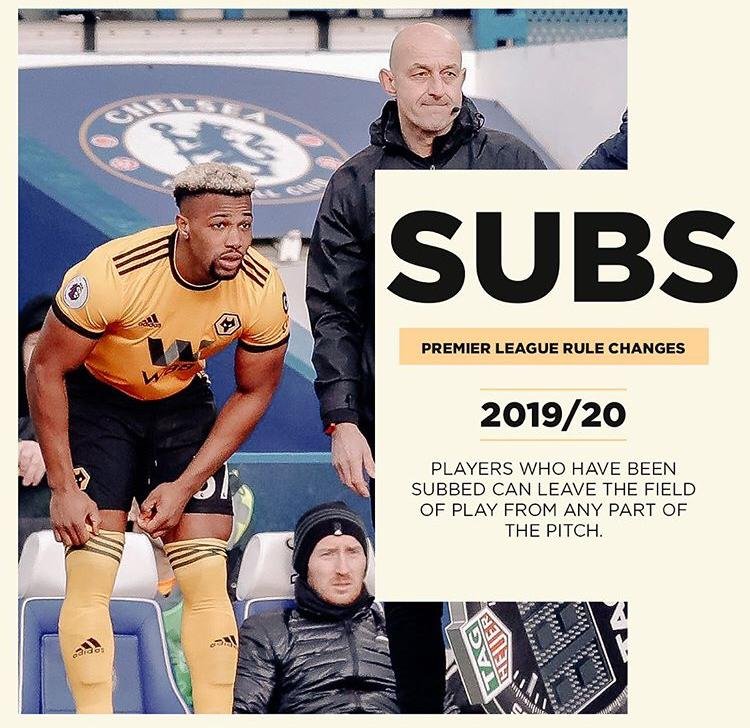
Substituted players must now leave the pitch by the nearest point on the touchline which will mean we will no longer be forced to endure preposterously slow walk to the half way line.
So players will have to think twice about how they exit the pitch and not only that they must make their way straight to the technical area or dressing room otherwise they risk being sanctioned for unsporting behavior.
YELLOW AND RED CARDS FOR COACHES
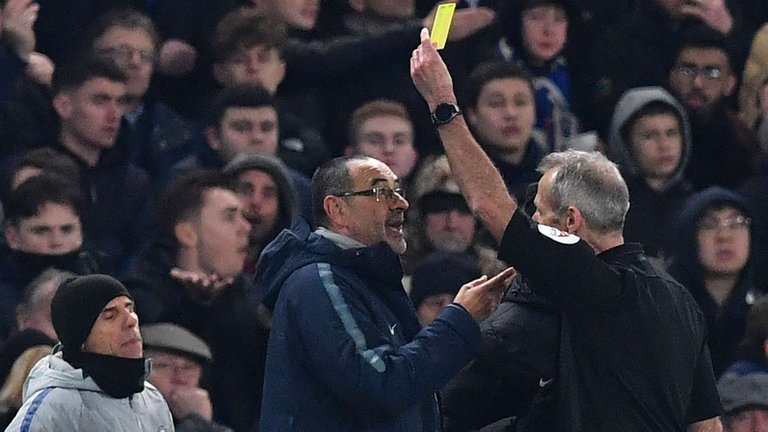
Coaches are now to be shown yellow and red cards the same way they do to players to clamp down on difficult behavior from coaches who don’t see eye to eye with the referee or the opposite number
If in the event of a touch line crises for example the offending individual cannot be identified for punishment the senior coach who is the technical area will be the default recipient.
PENALTY KICKS
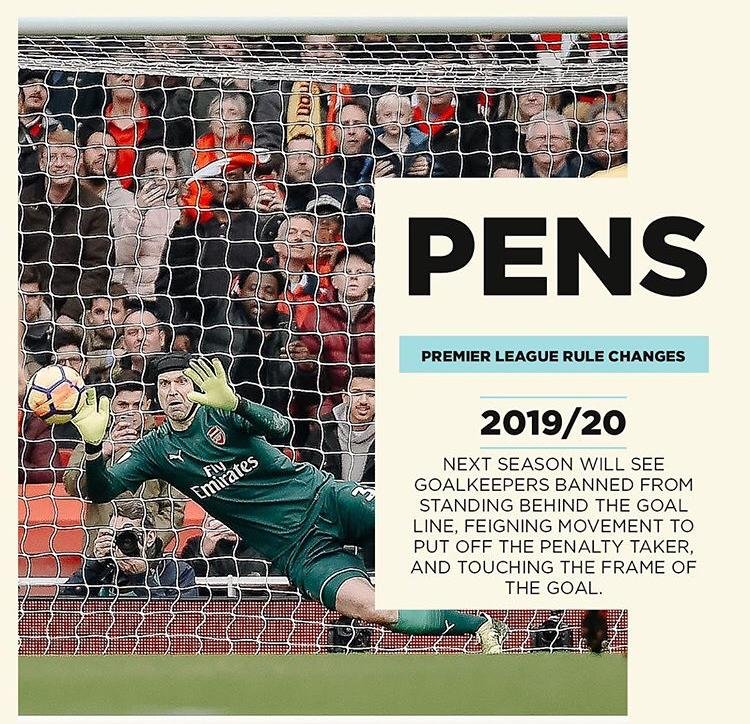
The issue of penalty kicks has cropped up a few times in recent years and the trend has been towards reducing the freedom of the goalkeeper.
In the new rule the goalkeeper must have at least part of one foot on or in line with the goal-line.
"Allowing the goalkeeper to have only one foot touching the goal line (or, if jumping, in line with the goal line) when the penalty kick is taken is a more practical approach as it is easier to identify if both feet are not on the line," goes the IFAB's explanation.
"As the kicker can ‘stutter’ in the run, it is reasonable that the goalkeeper can take one step in anticipation of the kick."
As well as those points, the penalty taker will now be permitted to receive a quick treatment if necessary before taking the kick.
HANDBALL
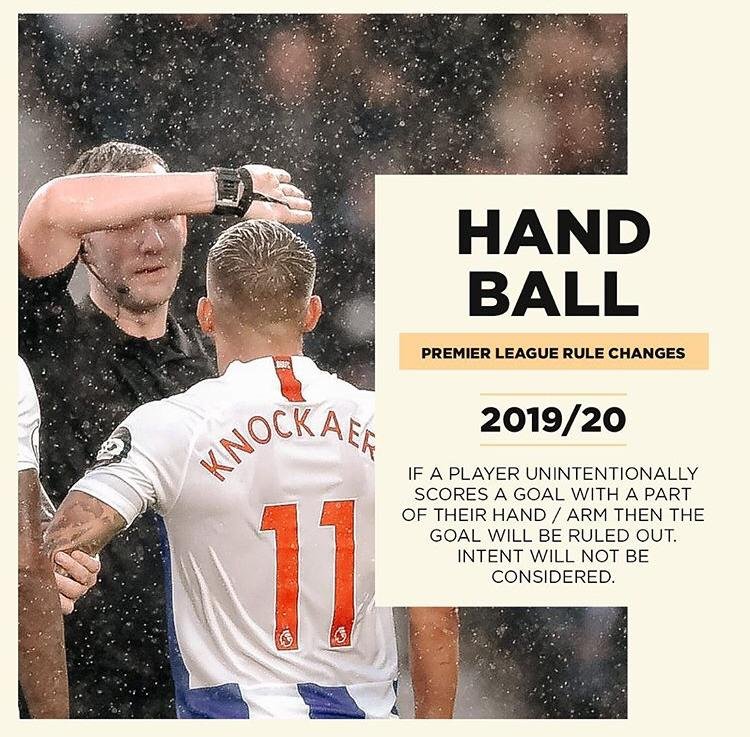
The IFAB has attempted to provide more clarity on the handball offence for occasions when the offence is deemed to be 'non-deliberate'.
Essentially, the changes will mean that there will be no goal in cases where the ball accidentally strikes a player's hand before crossing over the line.
Similarly, if a player has accidentally handled the ball and created an advantage or subsequently scores, they will be penalized with a free kick.
Despite the IFAB's attempts, we reckon that this one will still cause plenty of debate and consternation.
DROP BALL NO LONGER COMPETITIVE
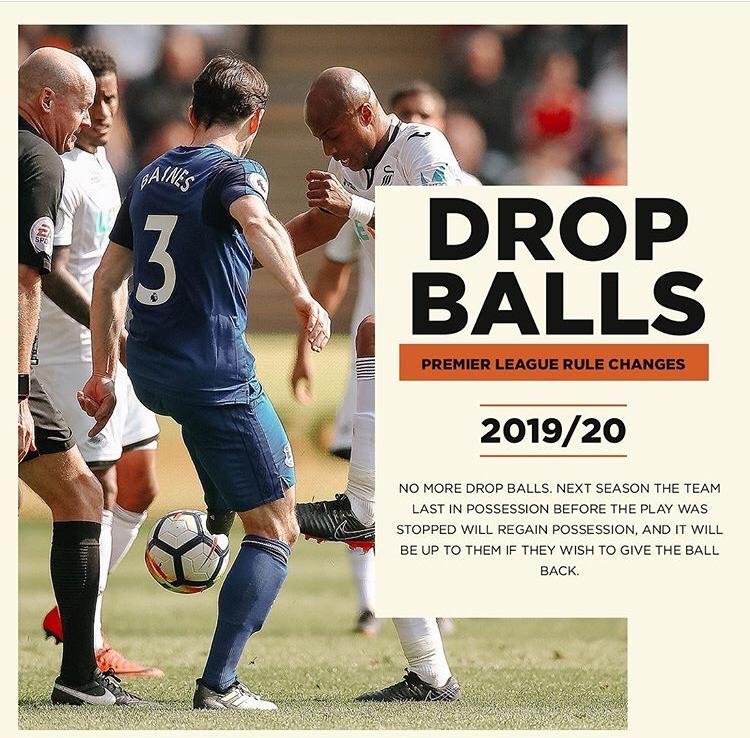
If play is stopped inside the penalty area the ball will simply be dropped for the goalkeeper.
If it is stopped outside the penalty area the ball will be dropped for a player from the team that last touched the ball. In all cases, players will have to be at least four metres (four and a half yards) away.
Here's the IFAB's explanation: "The current dropped ball procedure often leads to a ‘manufactured’ restart which is ‘exploited’ unfairly (e.g. kicking the ball out for a throw-in deep in the opponents’ half) or an aggressive confrontation.
"Returning the ball to the team that last played it restores what was ‘lost’ when play was stopped, except in the penalty area where it is simpler to return the ball to the goalkeeper.
"To prevent that team gaining an unfair advantage, all players of both teams, except the player receiving the ball, must be at least 4m (4.5 yds) away."
thank you for reading

I am not so fond of the rules that are taking away the freedom of a goalkeeper at penalties. Stopping a penalty is hard enough right now, why all the fuss about goalkeeper moving or touching the bar... Come on, give the guy a chance.
In the Women's world cup, a great penalty save from the Nigerian goalkeeper had to be retaken after a VAR decision, because she moved from her line a fraction too soon... Off course, the second one, was in!
Mehn, these article is lonq and nice, thanks for sharinq